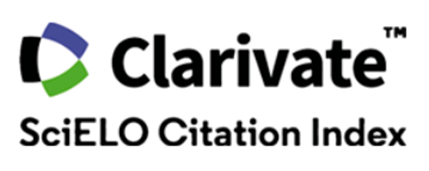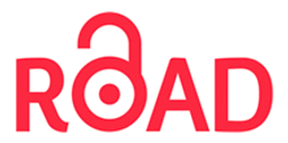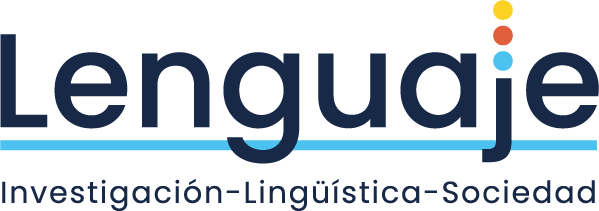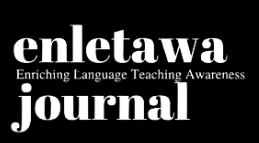DOI:
https://doi.org/10.14483/22486798.20280Publicado:
13-07-2023Número:
Vol. 28 (2023): Literatura y pedagogía: aprendizajes, formación y experiencias (Número Especial)Sección:
La literatura en las aulas: experiencias pedagógicasLa literatura como instrumento de aprendizaje del inglés como lengua extranjera
Literature as a Tool to Learn English as a Foreign Language
Palabras clave:
English, foreign language instruction, literature, linguistic research, social program (en).Palabras clave:
enseñanza de lengua extranjera, literatura, investigación lingüística, acción social, inglés (es).Descargas
Resumen (es)
En el proceso de la enseñanza del inglés como lengua extranjera (ILE), debe exponerse al alumnado a un uso real del idioma. Para ello, los materiales auténticos, como novelas no abreviadas ni niveladas y el modelo de aprendizaje cooperativo (cooperative integrated reading and composition [CIRC]), ofrecen una oportunidad única para aprender el idioma de una forma contextualizada, al tiempo que mejora en el alumnado su competencia cultural. Para mostrar cómo la obra literaria puede utilizarse de forma eficiente en la clase de ILE, se lleva a cabo una intervención empírica exploratoria en la que se analizan datos cuantitativos. Se aporta un estudio estadístico con datos objetivos sobre la idoneidad de la propuesta metodológica sobre la que versa este estudio.
Resumen (en)
In the process of teaching English as a foreign language (EFL), students should be exposed to the real use of the language. To this end, the use of authentic materials, such as the use of unabridged and unleveled novels, and the cooperative CIRC model offer a unique opportunity to learn the language in a contextualized way, while enhancing the learners’ cultural competence. To show how literary pieces can be used efficiently in the EFL classroom, an exploratory empirical intervention is carried out in which quantitative data are analyzed. A statistical study that provides objective data on the suitability of the methodological proposal of this study is presented.
Referencias
Acosta, R. y Careaga, N. (2020). El empleo de la literatura en el aprendizaje del uso real del inglés. MENDIVE, 18(1), 5-21. http://mendive.upr.edu.cu/index.php/MendiveUPR/article/view/1688.
Acosta, R. y Gómez, A. (2017). Nueva cultura para un excelente aprendiz interactivo de lenguas. Editorial Académica Española.
Acosta, R. y Vasconcellos, A. (2017). ¡Aprende el uso real del inglés! Ciencia e innovación tecnológica (pp. 548-556, Vol. I. EDACUM. Sección Pedagógica). Editorial Académica Universitaria.
Acosta, R. y Vigil, P. (2019). Learn real English use! Editorial Hermanos Loynaz.
Adam, H., Barratt-Pugh, C. y Haig, Y. (2019). “Portray cultures other than ours”: How children’s literature is being used to support the diversity goals of the Australian early years learning framework. Australian Educational Researcher, 46(3), 549-563. https://doi.org/10.1007/s13384-019-00302-w. DOI: https://doi.org/10.1007/s13384-019-00302-w
Albadalejo, M. D. (2007). Cómo llevar la literatura al aula de ELE: de la teoría a la práctica. MarcoELE, Revista de Didáctica Español Lengua Extranjera, 5, 1-51. https://www.redalyc.org/pdf/921/92152376003.pdf.
Al Haq, A. F. (2020). Literature and reading motivation in Saudi EFL classrooms: Bridging the missing link. The Asian ESP Journal, 16(1), 38-54. https://www.asian-esp-journal.com/volume-16-issue-1-1-february-2020/.
Alkhodimi, K. A. y Al-Ahdal, A. A. M. H. (2019). Literature in the EFL classroom in KSA: Rectifying a relationship at odds. Utopía y Praxis Latinoamericana, Revista Internacional de Filosofía y Teoría Social, 24(6), 256-264. https://www.redalyc.org/articulo.oa?id=27962177027.
Avara, H. (2021). Literature in EFL classroom: An overview of benefits, approaches and practices. En K. Büyükkarci y A. Önal (eds.), Essentials of applied linguistics and foreign language teaching. 21st century skills and classroom applications (pp. 58-77). ISRES Publishing, International Society for Research in Education.
Awada, G., Burston, J. y Ghannage, R. (2020). Effect of student team achievement division through Web-Quest on EFL students’ argumentative writing skills and their instructors’ perceptions. Computer Assisted Language Learning, 33(3), 275-300. https://doi.org/10.1080/09588221.2018.1558254. DOI: https://doi.org/10.1080/09588221.2018.1558254
Azorín, C. y Ainscow, M. (2018). Guiding schools on their journey towards inclusion. International Journal of Inclusive Education, 24(1), 58-76. https://doi.org/10.1080/13603116.2018.1450900. DOI: https://doi.org/10.1080/13603116.2018.1450900
Baker, C. (2001). Foundations of bilingual education and bilingualism. (Vol. 79). Multilingual Matters.
Barton, D. y Hamilton, M. (1998). Local literacies. Reading and writing in one community. Routledge.
Barton, D. y Hamilton, M. (2000). Literacy practices. En D. Barton, M. E. Hamilton y R. Ivanic (eds.), Situated literacies: Theorising reading and writing in context (pp. 7-15). Routledge.
Başal, A., Tunaboylu, O., Inal, S. y Kazazo-lu, S. (2021). Teaching literary genres through Web 2.0. Tools in ELT classrooms. En K. Büyükkarci y A. Önal (eds.), Essentials of applied linguistics and foreign language teaching. 21st Century skills and classroom applications (pp. 78-101). ISRES Publishing, International Society for Research in Education.
Bedard, C. y Fuhrken, C. (2019). Deepening students’ reading, responding, and reflecting on multicultural literature: It all started with brown girl dreaming. A Journal of the Texas Council of Teachers of English Language Arts, 49(1), 25-31. https://eric.ed.gov/?id=EJ1262280.
Capodieci, A., Rivetti, T. y Cornoldi, C. (2016). A cooperative learning classroom intervention for increasing peer’s acceptance of children with ADHD. Journal of Attention Disorders, 23(3), 282-292. https://doi.org/10.1177%2F1087054716666952. DOI: https://doi.org/10.1177/1087054716666952
Cárdenas, Y. M. (2019). “Las aventuras de Huckleberry Finn”: una herramienta de la literatura para desarrollar las habilidades del inglés como lengua extranjera y para entender la cultura norteamericana del siglo XIX. Actualidades Pedagógicas, (73), 97-117. https://doi.org/10.19052/ap.vol1.iss73.6. DOI: https://doi.org/10.19052/ap.vol1.iss73.6
Carrasco, C., Alarcón, R. y Trianes, M. V. (2015). Eficacia de una intervención psicoeducativa basada en clima social, violencia percibida y sociométricos en alumnado de Educación Primaria. Revista Psicodidáctica, 20(2), 247-262. DOI: https://doi.org/10.1387/RevPsicodidact.13206
Carter, R. A. y Long, M. N. (1991). Teaching literature. Longman.
Casal, S. (2006). Cooperative learning. GRETA, 14(1-2), 80-84. https://issuu.com/gretagranada/docs/greta_new_.
Collie, J. y Slater, S. (2002). Literature in the language classroom: A resource book of ideas and activities. Cambridge University Press.
Consejo de Europa. (2001). Marco Común Europeo de Referencia para las Lenguas: aprendizaje, enseñanza y evaluación. https://cvc.cervantes.es/ensenanza/biblioteca_ele/marco/.
Consejo de la Unión Europea. (2018). Recomendación del Consejo de 22 de mayo de 2018 relativa a las competencias clave para el aprendizaje permanente. Diario Oficial de la Unión Europea 2018/C189, 1-13. https://eur-lex.europa.eu/legal-content/ES/TXT/PDF/?uri=CELEX:32018H0604(01)&from=SV.
Delors, J. (1996). Learning: The treasure within. Report to Unesco of the International Commission on Education for the Twenty-first Century. Highlights. Unesco. DOI: https://doi.org/10.7788/ijbe.1996.24.1.253
Eskay, M., Onu, V., Obiyo, N. y Obidoa, M. (2012). Use of peer tutoring, cooperative learning, and collaborative learning: Implications for reducing anti-social behavior of schooling adolescents. US-China Education Review, 11, 932-945. https://files.eric.ed.gov/fulltext/ED538819.pdf.
Febriani, R. B. (2019). The students’ reflective writing manifestation of reader-response literary analysis. EduLite: Journal of English Education, Literature and Culture, 4(1), 35-44. https://doi.org/10.30659/e.4.1.35-44. DOI: https://doi.org/10.30659/e.4.1.35-44
Febriani, R. B., Rukmini, D., Mujiyanto, J. y Yuliasri, I. (2022). Lecturers’ perception on the implementation of approaches to teaching literature in EFL classrooms. Studies in English Language and Education, 9(1), 349-364. https://doi.org/10.24815/siele.v9i1.21035. DOI: https://doi.org/10.24815/siele.v9i1.21035
Febriani, R. B., Satinem, N., Haryani, H., Syafryadin, S. y Noermanzah, N. (2020). Conveying an author’s intention to EFL readers: The meaning of “The road not taken” by Robert Frost. International Journal of Innovation, Creativity and Change, 13(4), 271-283. http://dx.doi.org/10.31219/osf.io/a9f6b. DOI: https://doi.org/10.31219/osf.io/a9f6b
Felder, F. (2019). Inclusive education, the dilemma of identity and the common good. Theory and Research in Education, 17(2), 213-228. https://doi.org/10.1177/1477878519871429. DOI: https://doi.org/10.1177/1477878519871429
Ghosn, I. K. (2002). Four good reasons to use literature in primary school ELT. ELT Journal, 56(2), 172-179. http://dx.doi.org/10.1093/elt/56.2.172. DOI: https://doi.org/10.1093/elt/56.2.172
Gómez Rodríguez, L. F. (2012). Fostering intercultural communicative competence through reading authentic literary texts in an advanced Colombian EFL classroom: A constructivist perspective. Profile Journal, 14(1), 49-66. https://revistas.unal.edu.co/index.php/profile/article/view/29055.
Gómez Rodríguez, L. F. (2015). The cultural content in EFL textbooks and what teachers need to do about it. PROFILE Issues in Teachers’ Professional Development, 17(2), 167-187. https://doi.org/10.15446/profile.v17n2.44272. DOI: https://doi.org/10.15446/profile.v17n2.44272
Gutiez, P. (2000). La diversidad sociocultural en el currículum de los centros educativos. Profesorado, Revista de Currículum y Formación de Profesorado, 4(1), 1-13. http://www.redalyc.org/articulo.oa?id=56751266004.
Haddon, M. (2003). The curious incident of the dog in the night-time. Vintage.
Hamid, A. A. y Aziz, A. A. (2020). Language-based approach as a trend to enhance pupils’ interest in children’s literature. International Journal of Academic Research in Progressive Education and Development, 9(2), 318-333. https://doi.org/10.6007/IJARPED/v9-i2/7346. DOI: https://doi.org/10.6007/IJARPED/v9-i2/7346
Harrer, A., McLaren, B. M., Walker, E., Bollen, L. y Sewall, J. (2006). Creating cognitive tutors for collaborative learning: Steps toward realization. User Modeling and User-Adapted Interaction: The Journal of Personalization Research (UMUAI), 16, 175-209. https://doi.org/10.1007/s11257-006-9007-4 DOI: https://doi.org/10.1007/s11257-006-9007-4
Haryanti, D. U., Indah, R. N. y Wahyuni, S. (2021). Enhancing oral proficiency using three steps interview technique for eleventh graders. Journal of Languages and Language Teaching, 9(1), 61-68. https://doi.org/10.33394/jollt.v9i1.3271. DOI: https://doi.org/10.33394/jollt.v9i1.3271
Hill, R., Woodward, M. y Arthur, A. (2020). Collaborative learning in practice (CLIP): Evaluation of a new approach to clinical learning. Nurse Education Today, 85, 104295. https://doi.org/10.1016/j.nedt.2019.104295. DOI: https://doi.org/10.1016/j.nedt.2019.104295
Hişmanoğlu, M. (2005) Teaching English through literature. Journal of Language and Linguistic Studies, 1(1), 53-66. https://www.jlls.org/index.php/jlls/article/view/6/7.
Huber, C., Gerullis, A., Gebhardt, M. y Schwab, S. (2018). The impact of social referencing on social acceptance of children with disabilities and migrant background: An experimental study in primary school settings. European Journal of Special Needs Education, 33(2), 269-285. https://doi.org/10.1080/08856257.2018.1424778. DOI: https://doi.org/10.1080/08856257.2018.1424778
Khan, M. S. R. y Alasmari, A. M. (2018). Literary texts in the EFL classrooms: Applications, benefits and approaches. International Journal of Applied Linguistics & English Literature, 7(5), 167-179. http://dx.doi.org/10.7575/aiac.ijalel.v.7n.5p.167. DOI: https://doi.org/10.7575/aiac.ijalel.v.7n.5p.167
Juárez, P. (1996). La enseñanza de la literatura en los cursos de lengua y civilización para extranjeros. En ASELE. Actas VII (pp. 277-283). Centro Virtual Cervantes.
Lazar, G. (1993). Literature and language teaching: A guide for teachers and trainers. Ernst Klett Sprachen. Lenkauskaitè, J., Colomer, J. y Bubnys, R. (2020). Students’ social construction of knowledge through cooperative learning. Sustainability, 12(22), 9606. http://dx.doi.org/10.3390/su12229606. DOI: https://doi.org/10.3390/su12229606
León del Barco, B., Polo del Río, M. I. Gozalo, M. y Mendo, S. (2016). Relevance of cooperative learning about the different profiles of the bullying dynamic. An analysis by testing the effect size. Anales de Psicología [Psychology Annals], 32(1), 80-88. https://doi.org/10.6018/analesps.32.1.183141. DOI: https://doi.org/10.6018/analesps.32.1.183141
López Molina, J. (2000). La literatura infantil y juvenil en la enseñanza/aprendizaje de la lengua y la literatura. Instituto de Estudios Almerienses.
Lu, J. (2007). Podcasting: A fresh solution for old problems. En M. Thomas (ed.), Wireless ready e-Proceedings: Podcasting education and Mobile Assisted Language Learning (pp. 83-95). Nagoya University of Commerce & Business.
Mandarani, V. y Munir, A. (2021). Incorporating multicultural literature in EFL classroom. Indonesian Journal of English Language Teaching and Applied Linguistics, 6(1), 1-12. https://ijeltal.org/index.php/ijeltal/article/view/832. DOI: https://doi.org/10.21093/ijeltal.v6i1.832
Mateo, J. E. (1997). La educación en valores a través de la lengua y la literatura. En E. Orive (ed.), Literatura: creación y enseñanza. Actas del VI Simposio Nacional de la Federación de Profesores de Español (pp. 265-277). Ediciones del Orto.
McNaughton, D. (2020). Utilizing multicultural literature to foster critical literacy in a secondary English classroom [Tesis de máster]. Repositorio de Rowan University. https://rdw.rowan.edu/etd/2775.
Mendoza, A. (2008). La utilización de materiales literarios en la enseñanza de lenguas extranjeras. Biblioteca Virtual Miguel de Cervantes. https://www.cervantesvirtual.com/nd/ark:/59851/bmcrf680.
Muntaner, J. J. y Forteza, D. (2021). Impacto del aprendizaje cooperativo en la inclusión del alumnado en la Educación Secundaria. Educar, 57(2), 305-318. https://doi.org/10.5565/rev/educar.1236. DOI: https://doi.org/10.5565/rev/educar.1236
Myhill, D. (2018). Grammar as a meaning-making resource for improving writing. Contribution to a special issue Working on Grammar at School in L1-Education: Empirical research across linguistic regions. L1-Educational Studies in Language and Literature, 18(3), 1-21. https://doi.org/10.17239/L1ESLL-2018.18.04.04. DOI: https://doi.org/10.17239/L1ESLL-2018.18.04.01
Nanda, D. S. y Susanto, S. (2020). Using literary work as authentic material for the EFL classroom in Indonesia. International Journal of Innovation, Creativity and Change, 12(12), 1057-1064. http://dx.doi.org/10.31219/osf.io/cjrwt. DOI: https://doi.org/10.31219/osf.io/cjrwt
Northedge, A. (2003). Enabling participation in academic discourse. Teaching in Higher Education, 8(2), 169-180. https://doi.org/10.1080/1356251032000052429. DOI: https://doi.org/10.1080/1356251032000052429
Onrubia, J. y Mayordomo, R. M. (2015). El aprendizaje cooperativo: elementos conceptuales. En R. M. Mayordomo y J. Onrubia (coords.), El aprendizaje cooperativo (pp. 17-48). Editorial UOC.
Oribabor, O. A. (2014). Play as the predominant mode of language acquisition in early childhood learning. Research on Humanities and Social Sciences, 4(16), 149-152. https://bit.ly/3IG68sc.
Páez, E., Urbano, M., Campanario, M. C., Montiel, M. M., Patricio, M. V., Vioque, A. y Caparrós, R. (2018). Aprendizaje cooperativo y discapacidad visual: una experiencia de éxito hacia la inclusión educativa. Integración: Revista Digital sobre Discapacidad Visual, 3, 8-20. http://hdl.handle.net/11162/195532.
Palacio, R. J. (2012). Wonder. Random House.
Pan, C.-Y. y Wu, H.-Y. (2013). The cooperative learning effects on English reading comprehension and learning motivation of EFL freshmen. English Language Teaching, 6(5), 13-27. https://doi.org/10.5539/elt.v6n5p13. DOI: https://doi.org/10.5539/elt.v6n5p13
Paran, A. (ed.). (2006). Literature in language teaching and learning. Case studies in Tesol practice series. TESOL.
Pérez Patón, M. (2009). Cómo enfocar la enseñanza de la literatura en la educación secundaria. Revista Digital: Innovación y Experiencias Educativas, 21, 1-12. https://archivos.csif.es/archivos/andalucia/ensenanza/revistas/csicsif/revista/pdf/Numero_21/MERCEDES_PEREZ_1.pdf.
Rahman, F. (2016). The strategy of teaching literature through language-based method: A communicative approach. En The Annual Seminar on English Language Studies (pp. 156-170). FIB-UH Press.
Rass, R. A. (2020). Integrating multicultural literature in EFL teacher training curriculum. Open Journal of Modern Linguistics, 10(5), 588-598. https://doi.org/10.4236/ojml.2020.105035. DOI: https://doi.org/10.4236/ojml.2020.105035
Reyes, A. y Villacañas de Castro, L. S. (2020). La literatura en la clase de inglés: una propuesta sobre la diversidad para Primaria y Secundaria. En N. Ibarra (coord.), Identidad, diversidad y construcción de ciudadanía a través de investigación en educación literaria (pp. 117-132). Octaedro.
Romo-Mayor, P. y Pellicer-Ortín, S. (2022). Revitalising the role of literature in the contemporary EFL secondary classroom: A small-scale study. Didáctica, Lengua y Literatura, 34, 31-28. http://dx.doi.org/10.5209/dill.81346. DOI: https://doi.org/10.5209/dill.81346
Sanz, M. (2000). La lectura en el aula de ELE. Frecuencia L, 14, 24-27.
Sanz-Peinado, R. y Quesada-Zaragoza, N. (2021). El aprendizaje cooperativo: estudio de una metodología emergente inclusiva. MLS Inclusion and Society Journal, 1(1), 132-147. https://www.mlsjournals.com/MLS-Inclusion-Society/article/view/965.
Shi, H.-C. J. (2020). The use of individual and collaborative learning logs and their impact on the development of learner autonomy in the EFL classroom in Taiwan. Innovation in Language Learning and Teaching, 15(3), 1-15. https://doi.org/10.1080/17501229.2020.1737703. DOI: https://doi.org/10.1080/17501229.2020.1737703
Sholichah, I. R. y Purbani, W. (2018). Fostering language skills development through fairy tales: A literature study. Advances in Social Science, Education and Humanities Research, 165, 330-334. Atlantis Press. https://dx.doi.org/10.2991/iccsr-18.2018.73. DOI: https://doi.org/10.2991/iccsr-18.2018.73
Sirisrimangkorn, L. (2021). Improving EFL undergraduate learners’ speaking skills through project-based learning using presentation. Advances in Language and Literary Studies, 12(3), 65-72. https://eric.ed.gov/?id=EJ1307968. DOI: https://doi.org/10.7575/aiac.alls.v.12n.3.p.65
Sitman, R. y Lerner, I. (1996). Literatura hispanoamericana: herramienta de acercamiento cultural en la enseñanza del español como lengua extranjera. En S. Montesa y P. Gomís (eds.), Tendencias actuales en la enseñanza del español como lengua extranjera. I. Actas del Quinto Congreso Internacional de ÁSELE (pp. 227-233). Universidad de Málaga. https://dialnet.unirioja.es/servlet/articulo?codigo=892155.
Soto, A. B. (2018). Enseñar literatura en lengua extranjera con herramientas digitales. Reflexiones generales desde la didáctica de FLE. Tonos Digital: Revista de Estudios Filológicos, 35, 1-23. http://www.tonosdigital.es/ojs/index.php/tonos/article/view/2012/1021.
Stevens, R. J., Madden, N. A., Slavin, R. E. y Farnish, A. M. (1987). Cooperative integrated reading and composition: Two field experiments. Reading Research Quarterly, 22(4), 433-454. https://doi.org/10.2307/747701. DOI: https://doi.org/10.2307/747701
Suyatno. (2009). Exploring innovative learning. Masmedia Buana Pustaka.
Syam, R., Zaeni, A., Indah, R. N., Sauri, R. S. y Ruqayah, R. (2020). Cooperative integrated reading and composition (CIRC) model learning plan in improving English reading skill. Lentera Pendidikan: Jurnal Ilmu Tarbiyah dan Keguruan, 23(2), 222-232. https://doi.org/10.24252/lp.2020v23n2i3. DOI: https://doi.org/10.24252/lp.2020v23n2i3.
Van, T. T. M. (2009). The relevance of literary analysis to teaching literature in the EFL classroom. English Teaching Forum, 47(3), 2-9. https://eric.ed.gov/?id=EJ923454.
Ventura, M. (2015). La literatura como recurso didáctico en la enseñanza del español como lengua extranjera. Tejuelo, 21, 30-53. http://hdl.handle.net/10662/4529
Vygotsky, L. S. (1978). Mind in society: The development of higher psychological processes. Harvard University Press.
Zabala, V. (2008). La literacidad o lo que la gente hace con la lectura y la escritura. En D. Cassany (ed.), Para ser letrados. Voces y miradas sobre la lectura (pp. 25-35). Paidós.
Cómo citar
APA
ACM
ACS
ABNT
Chicago
Harvard
IEEE
MLA
Turabian
Vancouver
Descargar cita
Licencia
Derechos de autor 2023 Enunciación

Esta obra está bajo una licencia internacional Creative Commons Atribución-NoComercial-CompartirIgual 4.0.
La revista Enunciación es una publicación de acceso abierto, sin cargos económicos para autores ni lectores. A partir del 1 de enero de 2021 los contenidos de la revista se publican bajo los términos de la Licencia Creative Commons Atribución – No comercial – Compartir igual (CC-BY-NC-SA 4.0 CO), bajo la cual otros podrán distribuir, remezclar, retocar, y crear a partir de la obra de modo no comercial, siempre y cuando den crédito y licencien sus nuevas creaciones bajo las mismas condiciones.
El titular de los derechos de autor es la revista Enunciación, conservando todos los derechos sin restricciones, respetando los términos de la licencia en cuanto a la consulta, descarga y distribución del material.
Cuando la obra o alguno de sus elementos se hallen en el dominio público según la ley vigente aplicable, esta situación no quedará afectada por la licencia.
Asimismo, incentivamos a los autores a depositar sus contribuciones en otros repositorios institucionales y temáticos, con la certeza de que la cultura y el conocimiento es un bien de todos y para todos.














































